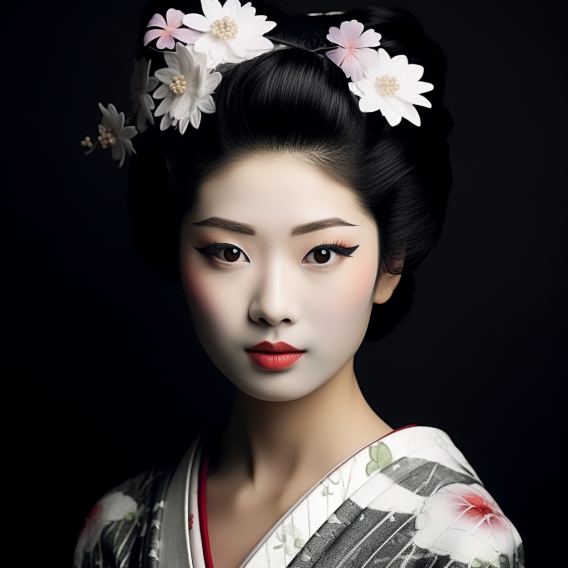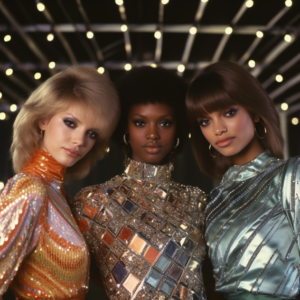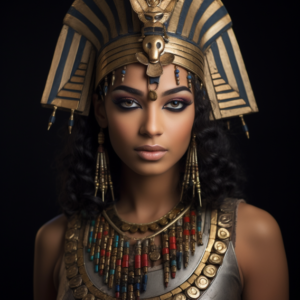In the heart of Japan’s cultural heritage lies a captivating tradition that transcends time – the artistry of the Geisha. Beyond their graceful performances and exquisite kimonos, the Geisha are renowned for their distinctive and meticulously crafted makeup. This exploration delves into the traditional Japanese makeup techniques of the Geisha, unraveling the secrets behind their iconic appearance and the cultural significance embedded in every stroke.
Introduction
The Geisha, often referred to as “artists of the floating world,” are revered for their mastery in various traditional arts, including dance, music, and conversation. Central to their artistry is the elaborate makeup that transforms their appearance into a living canvas. This makeup tradition is a testament to Japan’s cultural richness and the enduring allure of timeless beauty.
Historical Roots of Geisha Makeup
The tradition of Geisha makeup dates back to the Edo period (1603–1868), where distinctive white makeup, known as “oshiroi,” became synonymous with these skilled entertainers. Originally, the use of oshiroi served a practical purpose, allowing Geisha to be visible in dimly lit tea houses. Over time, it evolved into a symbol of traditional beauty and artistry.
Oshiroi: The White Canvas
The application of oshiroi is a meticulous process, involving a base of rice powder and water. The resulting paste is applied to the face, neck, and nape, creating a flawless, porcelain-like complexion. The white canvas symbolizes purity, and its uniform application sets the stage for the intricate details that follow.
Eyes That Speak: Traditional Eye Makeup
Geisha are recognized by their striking eyes, adorned with vibrant colors and precise lines. Traditional eye makeup involves the use of red and black pigments to accentuate and elongate the eyes. The inner corners are often left unpainted, creating a distinctive look that exudes elegance and mystery.
The eyebrows, carefully shaped and defined, play a crucial role in expressing the Geisha’s emotions during performances. Delicate lines are drawn to extend the eyebrows, contributing to the overall harmony of the facial features.
Vermeil Lips and Subtle Blush: Accentuating Facial Features
Geisha lips are a focal point of their makeup, painted in a vibrant shade of red known as “beni.” This crimson hue symbolizes youth and vitality. The application is precise, with a subtle gradation towards the center of the lips, creating an illusion of depth and allure.
Cheek color, known as “hikizome,” adds a touch of warmth to the Geisha’s complexion. Unlike Western makeup trends that often emphasize high cheekbones, Geisha apply blush lower on the cheeks, accentuating a soft, rounded visage.
Hair Ornaments and Wigs: Completing the Ensemble
The Geisha’s makeup is complemented by intricate hairstyles adorned with ornaments like hairpins and combs. The choice of hairstyle often reflects the Geisha’s seniority and the formality of the occasion. Wigs, meticulously crafted from real human hair, are sometimes worn to achieve specific styles.
Cultural Significance and Evolution
Beyond its aesthetic appeal, Geisha makeup carries deep cultural significance. It signifies the preservation of traditional arts and the enduring beauty standards of Japanese culture. While the art of the Geisha has evolved to embrace modern influences, the essence of their makeup remains rooted in tradition, serving as a bridge between the past and the present.
Modern Interpretations and Global Influence
In contemporary Japan, Geisha makeup has found new expressions, blending traditional techniques with modern aesthetics. Makeup artists and enthusiasts worldwide draw inspiration from the precision and artistry of Geisha makeup, incorporating elements into diverse styles and trends.
Conclusion
The traditional makeup techniques of the Geisha stand as a testament to Japan’s rich cultural heritage. Beyond the strokes of oshiroi and vibrant hues, Geisha makeup embodies a legacy of artistry, tradition, and a commitment to preserving the timeless beauty of Japan. As we explore the world of makeup traditions, the art of the Geisha serves as a captivating chapter, reminding us that true beauty transcends time and remains eternally connected to the cultural tapestry of humanity.



